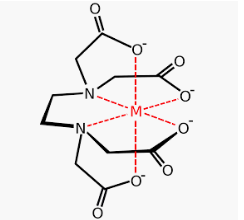
Friday, April 26th: "FDA OKs New Topical Treatment Duobrii for Plaque Psoriasis."
If I'm a psoriasis sufferer my interest is automatically piqued. Psoriasis - a nasty, inflammatory condition caused by an abnormally rapid division of skin results in itchy flaky patches of skin. Plaque psoriasis - the most common form of the disease - can cover large areas of the body. It's not just an annoying rash; severe psoriasis can be painful and disfiguring. The suicide rate of psoriasis sufferers is 20% higher than that of the general population.
Although there are a number of ways to treat the disease, each has its drawbacks - inadequate efficacy, dangerous side effects (1), or both. An innovative therapy that offered significant advantages would be very good news for people with the disease.
But, Duobrii isn't anything close to innovative. It's maker, Bausch Health, has simply combined two generic drugs - each already used to treat psoriasis - into one tube. Wow. How did they ever think of that?
“With today’s approval of DUOBRII, patients suffering from plaque psoriasis now have an innovative topical treatment option that uniquely combines two well-known ingredients, halobetasol propionate and tazarotene, with established safety profiles, into a single lotion featuring dual mechanisms of action,”
Bill Humphries, President of Ortho Dermatologics (a division of Bausch Health)

Well, that's not terribly exciting, is it? There must be some benefit to the stuff, even though the FDA previously rejected it in 2018. There must be more. Humphries continues...
Now, with Duobrii, health care professionals and their patients have a new topical treatment option that can help them achieve those long-term goals. As a result, we believe that Duobrii has the potential to delay some patients from switching to more expensive biologic treatments, which could potentially result in health care savings.
Well, that's not bad. Who wouldn't want to save money by delaying the switch to expensive biologics? But, couldn't you just use the two separate creams to delay the switch and save money too?
Not really, according to Bausch. The company claims that "the halobetasol propionate/tazarotene combination lotion was 'consistently' more effective than its individual agents and vehicle...supporting the synergy of the two ingredients when combined in one lotion formulation."
Although it seems a little hard to believe that mixing the two drugs together works better than applying them separately, I can't think of any reason to distrust the company.
Except maybe this:

It's our old friend Valeant! And it's also reformulated - as Bausch. You may remember them from 2016. I had some unpleasant things to say about the company back then (See: Pond-Scum Pharmaceuticals (Aka Valeant) Hits A New Low) after some questionable business practices. And I wasn't the only one. Ed Silverman over at Pharmalot had this to say after the company raised prices "just a bit" on calcium EDTA, a drug to treat lead poisoning in kids (2):

(It got better. See: "Feds hit former Valeant, Philidor execs with multimillion-dollar fraud and kickback charges" by Cathy Helfand over at Fierce Pharma and "Arrogance and Greed: Ackman, Valeant Pay $290M to End Allergan Insider Trading Lawsuit" by Mark Terry at BioSpace.)
So, it should not be the least bit surprising that a 100-gram (3.5 ounces) tube of Duobrii is being sold for $825. But, according to Humprhies, that's half the cost of the one tube of generic halobetasol and one of tazarotene. $1600+ for a little tube of skin cream? Ouch.
It's no secret that generic drug prices have risen rapidly - obscenely in some cases. Is Duobrii simply one more example of this trend? It's not that simple. Pharmalot's Silverman had this to say:
The Association for Accessible Medicines, the trade group, claimed generics saved the US health care system $265 billion in 2017. Generally, generics are believed to account for 89% of prescriptions, but only 26% of drug costs.
There was a period a few years ago when prices for some generics spiked, due to lack of competition or shortages, although that seems to have largely abated. With this in mind, generics generally remain an affordable option.
Maybe so, but not always. $825 for 3.5 ounces of a mixture of two generic drugs doesn't sound all that affordable.
NOTE:
(1) Biologics are universally expensive. Since many alter the immune system there can be serious (even deadly) reactions in some people. On the other hand, one week after I took my first injection of Dupixent my entire lifetime of miserable eczema disappeared and has never returned. But I had to wait an hour in the doctor's office after the first few injections to make sure I wouldn't have an anaphylactic reaction. Also had to carry an epi pen for a while. (See: I'm A Human Pincushion And A Damn Lucky One)
(2) EDTA is typically used by quacks to treat imaginary diseases from imaginary heavy metal toxicity (chelation therapy). But it does have a legitimate use - lead poisoning, where there is real heavy metal poisoning. It works by binding the metal ion and helping the body eliminate it. Photo: Wikipedia (M = lead).




